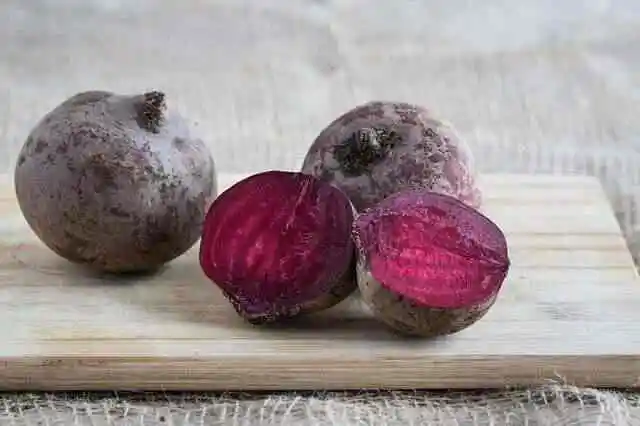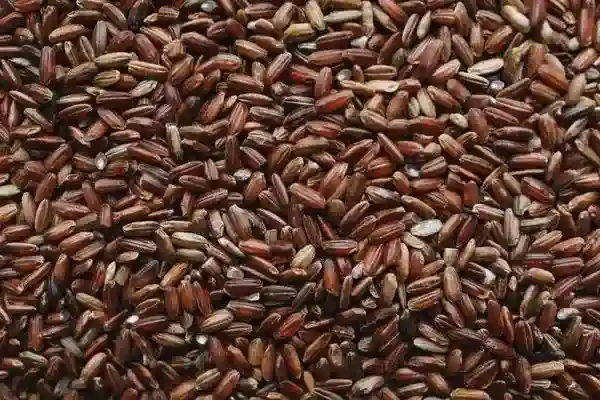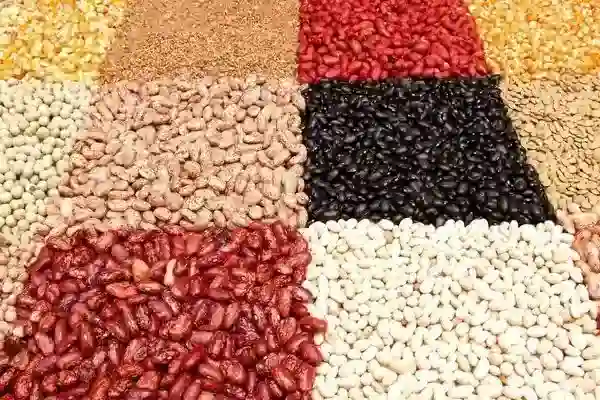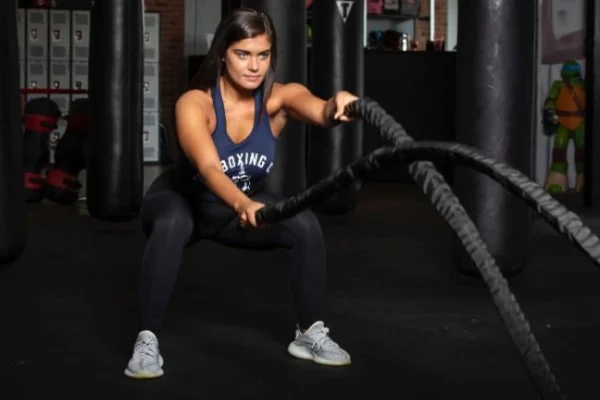Do you constantly feel drained, tired and lacking energy to power through your day? Daily food choices play a significant role in sustaining consistent energy levels and stamina. Consuming the proper nutrients provides your body with long-lasting fuel for physical and mental performance without energy crashes. This complete guide reveals the top science-backed foods for increasing stamina while unpacking how your diet directly impacts daily energy reserves available for tapping into. You’ll also discover essential lifestyle habits besides diet-complementing energy-boosting meal plans. Get ready to discover delicious foods that help boost lagging energy levels for good!
Food to increase stamina is required when you start experiencing low energy, getting tired and feeling out of breath and you have started noticing your productivity has gone down, and you may feel you’re eating well but the quantity and quality of your food plays a vital role in increasing your stamina, it’s time you add nutrient-rich foods that would be natural enhancer with essential vitamins and minerals included in your diet.
There are a lot of foods to increase stamina. Here we have mentioned some of the best foods to help you increase your stamina.
Understanding Why You Feel Chronically Fatigued and Drained
Before diving into top foods for fighting fatigue, it’s essential to understand the potential reasons behind low energy and endurance levels. Here are the most common causes of exhaustion:
Poor Nutrient Intake
If your diet lacks essential energizing nutrients like B vitamins, iron, magnesium, antioxidants and healthy fats, it’s impossible to sustain consistent energy reserves. Nutrient deficiencies drain stamina.
Blood Sugar Spikes & Crashes
Eating lots of refined carbs and sugars causes blood glucose spikes, signaling the release of insulin, which makes levels then sharply crash – leaving you feeling wiped out.
Dehydration
Lack of fluids causes cells and organs to function less efficiently. Just a 2% drop in hydration diminishes focus, endurance and overall energy expenditure.
Inadequate Calories
Too few calories over extended periods slows metabolism and leads to sluggishness. Undereating prevents cells from producing ATP energy.
Chronic Stress & Inflammation
Ongoing stress hikes cortisol and inflammatory cytokines, hampering cellular energy pathways critical for maintaining vibrancy.
Lifestyle Factors Like Poor Sleep
Not getting 7+ hours of quality sleep every night impedes the next day’s stamina. Over-exercising and recovery neglect also play a role. Identify which factors relate most to your fatigue, as correcting them forms the foundation for renewing sustainable energy. Now, let’s explore powerhouse foods and nutrients supplying the raw ingredients for optimized energy levels.
1.Bananas:

2. Beets:
Bananas are one of the most loved fruits by all age groups. It’s a good source of carbohydrates, which the body uses for energy. They also contain potassium, a mineral that helps to regulate blood pressure and heart function and that can help to prevent cramping and provide essential energy to the body. It is considered one of the healthiest fruits that should be consumed daily.

Beets are one of the most wonderful sources of food you can add to your diet chart as they are a great source of healthy energy and help in maintaining a good digestive system. Beets are rich in nitrates, which the body converts into nitric oxide. Nitric oxide helps to improve blood flow and oxygen delivery to the muscles, which can improve stamina.
3. Coffee:

It can help increase alertness and improve focus, and it’s a popular choice for a pre-workout energy boost. It contains caffeine which can help to improve your stamina and can also help to increase your heart rate. One research study in the Journal of Strength and Conditioning Research found that participants who consumed caffeine before working out showed better strength and endurance during workouts.
4. Eggs:

Eggs are a good source of protein such as B vitamins and iron, which the body uses to build and repair muscles. They also contain nutrients that are essential for energy production and help in muscle building and repair. They also build stamina and strengthen your immune system.
5. Oatmeal:

is the best thing to start your day with because it’s rich in fiber. And they are another great source of carbohydrates. They also contain fiber, which can help to keep you feeling full and help to regulate blood sugar levels. Not only are they good for breakfast, but also for other meals of the day.
6. Dark Chocolate:

Chocolate contains caffeine, which can help to increase energy levels. It also contains antioxidants, which can help protect your cells from damage, it means you can eat chocolate without feeling guilty but remember to eat darker chocolates that contain more cocoa solids and less sugar.
7. Water:

It is important to stay hydrated when you are trying to increase your stamina. Water can help to keep your body temperature regulated and can avoid getting dehydrated. Make sure you drink plenty of water and maintain a good intake of food. It also helps in stimulating your digestion. It can also keep any muscle cramps away during exercise.
8. Yogurt

It has a high amount of calcium and protein and helps with digestion. It is one of the best foods to consume before a workout or even on an empty stomach. By adding some fruit, you will get an extra boost of nutrition and help in building stamina.
9. Brown Rice

As we all know, brown rice is less processed compared to white rice and more nutritious and has more vitamins, fibers, and minerals than white rice. It also regulates blood sugar levels and provides good energy to the body.
10. Avocados

It contains high amounts of fiber and healthy fats. They are also high in nutrients, promote optimal blood levels and are used as an energy source. Avocados are a good source of vitamin B and have mitochondria, which help produce energy.
11 .Nuts

If you’re looking for instant energy foods, nuts are a good source. They are a powerhouse of proteins, bioactive compounds, and fatty acids, which are considered good sources to build stamina, and they are also rich in omega 3 fatty acids, which is a substance that increases athletic performance. Nuts would help increase blood flow for working muscles.
12. Green, leafy vegetables

Vegetables are packed with vitamins and minerals, and fiber which are low in calories and which can reduce heart disease, high blood pressure, and obesity. Veggies are rich in iron and fiber and micronutrients which can help in improving red blood count and proper blood circulation.
13. Oranges

Oranges contain vitamin C. With one orange, you get up to 106 percent of the RDA (Recommended Dietary Allowance) for vitamin C. It also protects the body’s cells from oxidative stress, and research confirms that oxidative stress increases the chances of fatigue. Oranges can reduce fatigue.
14. Beans

It’s a great source of natural energy and contains a good amount of protein, fiber, and carbohydrates, which can maintain blood sugar levels and provide energy. Beans would also help to fight inflammation. Black beans are good sources of magnesium, manganese, iron, and folic acids, which would be helpful in the production of energy.
15. Chicken

Chicken would be a superb source of high protein with low calories, it can also help in improving health and metabolism and provides relief from fatigue, and athletes use this food for high energy and stamina.
16. Fatty fish

Fatty fish like salmon and tuna have a good combination of protein, vitamin B, and fatty acids. If you can take 100 grams of this fish daily, it can fulfill fifty percent of your daily requirement of protein for an adult and also keep you alert and boost your mood. This type of fish contains vitamin B12, which helps in energy metabolism and reduces fatigue.
Omega-3s found abundantly in salmon combat inflammation while improving insulin sensitivity and oxygen usage during activity – allowing muscles to work harder for longer periods before fatiguing.
Nutrient Overview: Which Vitamins and Minerals Combat Fatigue?
Alongside the energizing foods overviewed already, sufficient intake of the following vital vitamins, minerals and macronutrients proves critical for maintaining high daily energy expenditure without fatigue:
● B Vitamins – Converting carbs/fats into glucose cellular fuel
● Vitamin C – Assists iron absorption; antioxidant protects cells
● Iron – Transports oxygen to tissues for aerobic energy
● Magnesium – Facilitates hundreds of reactions like ATP energy creation
● Omega-3s – Supports oxygen usage efficiency; controls inflammation
● Protein – Steady supply of amino acids to repair and fuel cells
● Carbohydrates – Glucose provides instant energy used during exercise
● Antioxidants – Defends against cell damage from oxidative stress
● Zinc – Contributes to mitochondrial biogenesis; enzyme cofactor
● Potassium – Lowers muscle cramping risk; electrolyte balancing
Track if you meet daily recommended values for each of the above nutrients. Falling short in one can hamper energy metabolism. Next, we’ll explore how popular diets and menu plans specifically cater to maximizing stamina.
Best Diets to Follow for Sustained Energy Levels
Some trendy diets touting rapid benefits often lead to cycles of intense restrictions followed by exhaustion and burnout. Alternatively, the following healthy eating plans provide balanced nutrition for stable energy:
Mediterranean Diet
Emphasizing plant-based foods like fruits/vegetables, whole grains, legumes, nuts, and olive oil, this style delivers a blend of macronutrient energy sources. Occasionally enjoying fatty fish, eggs, poultry, or dairy adheres to a well-rounded approach that nourishes endurance.
DASH Diet
This meal plan focused on lowering blood pressure via decreased sodium excellently supports lasting energy. Limiting refined sugar crashes while encouraging fruits, vegetables, low-fat dairy, and whole grains gives cells steady fuel access.
80/20 Diet
Eating wholesome, minimally processed foods 80% of the time while allowing treats 20% of the time helps curb deprivation tendencies. This flexible approach allows long-term consistency, which bolsters metabolic and energy levels.
As you craft daily menu plans maximizing fatigue-fighting nutrients, proper meal timing also assists in sustained energy…
Strategic Meal Timing Habits That Prevent Energy Crashes
Do you ever notice that some days you feel supercharged after eating while other meals leave you sluggish and sleepy soon after? The timing of when you eat certain foods makes a big difference in energy levels. Here’s a timeline using nutrition to optimize productive energy expenditure while minimizing fatigue:
Breakfast: To kickstart your day, focus this meal on protein, fibre and healthy fats over quick carbs. Items like veggie omelettes, Greek yogurt bowls, overnight oats or nut butter toast supply hours of stable energy.
Morning Snack: Bring some complex carbs and fruit mid-morning to provide an influx of glucose right when insulin sensitivity peaks. Hummus and veggie slices, peanut butter apple slices or homemade protein bars are intelligent options.
Lunch: Refuel midday with a balanced dose of lean protein, whole grains or starchy carbs, and colourful produce for sustained calorie burn during afternoon tasks. A great template is salmon over quinoa with greens.
Afternoon Snack: Around 3 pm, when energy tends to lag, have snacks featuring cod liver oil, nuts/seeds or pieces of dark chocolate for an antioxidant and omega-3 infusion to combat inflammation and mental fatigue until dinner.
Dinner: For your evening meal, focus again on veggie-centred protein and fibre without significant portions of carbs that can interfere with sleep quality. This keeps blood sugar stable as you wind down toward bedtime.
Strategically timing certain nutrients corresponds to bodily rhythms and daily activity patterns. Aligning food choices with energy needs during AM peak productivity versus PM rest sets you up for success.
Lifestyle Habits Outside Diet Impacting Energy Levels
Achieving your peak energetic potential requires nutrition and optimizing other lifestyle areas that weaken your stamina. Here’s how other factors contribute to fatigue, along with solutions:
● Inadequate Sleep – Getting less than 7 hours of sleep nightly results in next-day exhaustion. Stick to consistent early bedtimes, allowing your body to rest fully.
● Excess Stress – Ongoing heightened cortisol and inflammation weaken cellular energy pathways. Build in daily meditation, yoga, or relaxing solo walks to calm your nervous system.
● Underactive Thyroid – Fatigue and unexplained weight gain may indicate hypothyroidism. Have your doctor test T3 and T4 levels to catch any imbalances needing treatment.
● Medications Side Effects – Certain prescriptions like antihistamines, blood pressure and antidepressant meds list fatigue as a side effect. Consult your doctor on alternatives to diminishing energy.
● Overtraining – Pushing your body consistently beyond capacity thwarts recovery processes, draining power for next-day workouts. Schedule 1-2 complete rest days weekly.
Fine-tuning all aspects of your lifestyle works synergistically with a peak energy diet to help you feel your best and make it through busy days.
Sample High Energy Day of Eating for More Stamina
What does a typical day following an eating pattern geared toward more stamina look like? Here’s an example of an energy day in the life demonstrating how to translate nutrition advice into realistic meals and snacks:
Early Morning:
– 16-20oz lemon water upon rising
– Green tea with 1 tbsp raw honey
Breakfast:
– Veggie scrambled eggs with tomatoes, peppers, onions
– 1⁄2 avocado sliced
– Handful of nuts
Mid Morning Snack:
– Smoothie with spinach, banana, peanut butter, milk/yogurt, flaxseed
Lunch:
– Salmon salad over greens with chickpeas and nut/seed mix
– Sweet potato
– Beet and carrot side salad
Afternoon Pick-Me-Up:
– Apple with almond butter
– Dark chocolate square (70% cocoa)
Dinner:
– Chicken stir fry with broccoli, carrots, cauliflower over brown rice
– Greek yogurt with blueberries
This sample menu provides a template for getting in foods from each energy-boosting category throughout your day for sustained, vibrant energy. Tailor snacks and meals to personal preferences while adhering to balanced nutrition guidelines.
The Energy Equation for Optimizing Stamina and Performance
The keys to tapping into consistent, bottomless energy stores comprise:
● Consuming Energizing Nutrients: B vitamins, vitamin C, iron, magnesium, antioxidants, omega-3s, protein, prebiotic fibre, complex carbs
● Strategic Meal Timing: Protein/fats early, carbs mid-day, plant-based dinners
● Lifestyle Support: Adequate sleep, stress management, hydration, rest days
Boost lagging energy levels by emphasizing these high stamina nutrients in snacks and meals spread evenly in a personalized schedule matching the demands of your day. Combine smart eating with other positive lifestyle tweaks, synthesizing daily diet efforts for abundant energy!
Conclusion
A few signs of low stamina are when you experience low energy, lack of enthusiasm, and inability to concentrate for a long time. it can have a negative impact on all the activities, let it be professional or personal, when we start experiencing these symptoms of low stamina, we should modify our daily routine by including foods to increase stamina and exercises which can help improve energy levels and avoid symptoms of low stamina.
Related Articles:
Yoga To Reduce Belly Fat: 13 Simple And Best Exercises [2022]
7 Powerful and Effective Weight Loss Exercise For Female At Home 2022
[2022] The Ultimate Guide To 12 Best Ayurvedic Medicine For Weight Loss








![14 Benefits of Surya Namaskar [2022]: A Complete Guide 29 14 Benefits of Surya Namaskar [2022]: A Complete Guide](https://getfitnessguru.com/wp-content/uploads/2022/08/Banner-600x400.webp)
